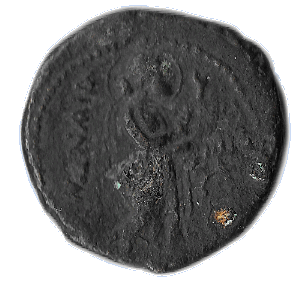Mäetagused vol. 85
Summary
-
 “Empty room” or self-reflection and visual-textual case study on teaching and learning of providing spiritual care
“Empty room” or self-reflection and visual-textual case study on teaching and learning of providing spiritual care
Piret Paal
Head of Palliative Care Research Institute
Paracelsus Medical University, Salzburg, Austria
piret.paal@pmu.ac.at Keywords: health, palliative care, spiritual care, spirituality
According to the vision of the World Health Organization, spirituality is an integral part of human existence. Spirituality is even seen as an all-encompassing essence of the human being that requires appreciation and respect. Spirituality is closely linked to the search for meaning, the sense of connection and the feeling and experience of belonging. The article explores the question of whether and how it is possible to teach and learn spiritual care when one is ‘not spiritual’ oneself. The case study, based on the student’s self-reflection, is theoretically inspired by Ricoeur’s theory of narrative meaning-making and a search for explanations of life issues. It is a visual-textual case study, which also explains the appropriateness of the chosen method of self-reflection and analysis for recording and making sense of emotional-social-relational experiences.
Siberian Estonians’ childbirth customs and birth stories
Anu Korb
Senior Research Fellow
Estonian Folklore Archives, Estonian Literary Museum
anu.korb@folklore.ee
Keywords: childbirth community, customs, Estonians, fieldwork, Siberian stories
To study the childbirth customs and stories of Siberian Estonians, I used conversations and interviews conducted in various Siberian Estonian communities during the fieldwork of the Estonian Folklore Archives between 1991 and 2013, as well as the memories of Estonians who had been born in the Estonian settlements in Siberia and repatriated during or after the Second World War. As information related to childbirth customs is very much a private matter, the collection of such material during fieldwork in Siberia was somewhat limited due to short time and the guest status of the collectors. Women born in the 1910s–1930s who had experience of giving birth at home were more likely to share information.
Siberian Estonians, who were born and raised in village communities with a rich heritage, share both personal and community experiences in their childbirth stories. Although the triumph of state medicine, with its small hospitals, had reached Siberian villages after the end of the Second World War, the initially trained medical professionals were met with mistrust and alienation. Village midwives were still respected, and villages adhered to many of the old beliefs about childbirth, as childbirth was controlled by the village community. Over time, giving birth under the supervision of hospital-trained medical staff became the norm. So, the need for village midwives has disappeared, and some of the traditions and customs associated with childbirth have been forgotten. At the same time, traditions related to the pre-pregnancy period and some childbirth stories helping to raise community awareness have remained very much alive.
 Estonian settlers of the Black Sea coast under malaria attacks
Estonian settlers of the Black Sea coast under malaria attacks
Aivar Jürgenson
Senior Research Fellow
Estonian National Museum
aivar.jyrgenson@erm.ee
Keywords: Caucasus, Estonians in Abkhazia, malaria, settlement colonization
At the end of the 19th century, Estonian settlers encountered malaria in the Volga region and Siberia, but outbreaks with the most serious consequences hit Estonians in the Black Sea coastal region of the Caucasus. The article looks at the first contact of the local Estonians with malaria, how the disease affected migrations and settlement activities, what the Estonians’ descriptions of the disease were, what the causes of the disease were believed to be, how malaria was treated, and what preventive measures were used against the disease.
Although malaria had also been present in many parts of Europe in earlier centuries, it had almost disappeared in the second half of the 19th century due to improved hygiene and sanitation. Europeans encountered malaria mainly in colonial countries, and so did Estonians. While in Estonia there were still several outbreaks of malaria in the first half of the 19th century, it was no longer a problem in the second half of the century. Now, Estonians came into contact with malaria mainly abroad – in warmer and wetter regions, where Estonian men had been conscripted into military service (e.g., the Russo-Turkish War, the Crimean War; cf. the Turkish disease) or where they had emigrated and established settlements. The resettling of Estonians to the Caucasus, which took place in the last quarter of the 19th century, cannot be described without mentioning malaria. Malaria hit Estonians primarily in settlements built in coastal areas, where there were sufficiently moist conditions for the development of malaria mosquitoes. Estonian colonists fell very ill in the first years of settlement, and their mortality rates were high. Many Estonians decided to return to their homeland due to malaria.
The struggle of the Estonian settlers of the Black Sea coast of the Caucasus with malaria occurred at a time when science had not yet discovered either the plasmodium that causes malaria or the role of mosquitoes in the transmission of the disease. The colonial authorities had introduced quinine as an antimalarial agent, which was distributed to the settlers, including Estonians, and began to drain the land, but the mechanisms of the disease’s origin and spread were unknown. This is also reflected in the disease explanations and treatment methods that were common among Estonian settlers. Folk names and magical healing methods for malaria were brought from Estonia, and were applied in combination with methods from conventional medicine. Neither the first nor the others corresponded to the true nature of the disease. Although malaria has been familiar in Estonia as well, also as a mythological disease, the mythological aspect has not been thoroughly thematized in the material of Caucasian Estonians, which does not mean that it was unknown. Although there are no surviving legends related to malaria as a mythological disease, and malaria is not presented as a disease demon, this may be due to the choice of the medium: our knowledge of Estonians’ struggle with malaria comes from reports sent to Estonian newspapers by the settlers, but the newspapers preferred to publish rational texts – the mythological side of the malaria lore, if it was known, was not present in the articles published in the newspapers. However, some treatment techniques have been preserved that convince that malaria was also explained mythologically. The treatment methods also betray the fact that the line between rational and mythological explanations may have been blurred: both old magical treatment methods and new medications offered by conventional medicine were used.
As malaria was one of the main factors hindering settlement activities in the Caucasus, which is reflected by a rather extensive return migration, it acquired an important place in the so-called founding narrative of the settlements over time. Malaria was part of the wild nature that had to be conquered in order to achieve a stable existence and future for ourselves and future generations. The cutting down of dense forests and the struggle with wild animals threatening the settlers’ households was marked by hard work, which in turn testified to the settlers’ work ethic. Malaria was also attributed to intensive work. This confirmed the self-image of Estonians, for whom hard work has an important role.
Information about the discovery of the causative plasmodium of malaria at the end of the 19th century, which proved the role of mosquitoes in the spread of malaria, reached the Caucasus with a slight time lag. It especially concerns the late arrival of new knowledge among the colonists – earlier knowledge about the connection of malaria with humidity and poisonous vapours remained among Estonian settlers even in the 20th century. Based on the new knowledge, the authorities improved the previous anti-malaria measures – during the Soviet times, a certain type of fish was cultivated in the water bodies, which destroyed the mosquito larvae. Swamp drainage, anti-humidity measures in building architecture, deforestation for farmlands and eucalyptus planting were in use in the late 19th century and destroyed the breeding grounds for mosquitoes even before the connection between mosquitoes and malaria was discovered. These methods are still in use today, because malaria has not really been eradicated from the Caucasus.
 Traits of Albert Camus’s existentialism in the films of Priit Pärn
Traits of Albert Camus’s existentialism in the films of Priit Pärn
Paul Kaspar Nurk
Laureate of the 3rd prize of the competition of student research 2022
nurk.paul@gmail.com
Keywords: absurd, Albert Camus, existentialism, cartoon, Priit Pärn
Comparison of two works benefits the understanding of both of them. The comparison finds the overlap between the works along with the standpoints that distinguish them. The interpretation of these works is broadened and also more distinctly delimited. The article examines the films of Estonia’s most accomplished animation director Priit Pärn for signs of existentialist thought, based on Albert Camus’s The Myth of Sisyphus. Close textual analysis was used to answer the research question: which existentialist traits appear in Priit Pärn’s films, and how they resemble and differ from Albert Camus’s view of existentialism.
The research found numerous parallels between Priit Pärn’s filmography and Camus’s existentialist thought. One of the leitmotifs of Pärn’s films is the prevalence of preposterous totalitarian systems, where the prevailing situation is nearly identical to one in which the absurd man would discover the absurd. Various characters from these worlds have lost their human shape in a way that causes discomforting alienation in the viewer, which is one of the absurd discoveries mentioned by Camus. Though many of Pärn’s characters are similar to the absurd man, only in one of the films are they able to free themselves from the rigid routine conclusively. However, none of the characters recognize the absurdity of the system around them: they either live under its hardship or those who free themselves resemble the absurd man only in their actions, not in their mentality, because they do not act upon a logical discussion. Distinctive to Pärn’s style, the unrestricted approach to reality aligns with Camus’s reluctance about the mindset that treats humans and everything else as if they had a definite place and purpose in the world.
Priit Pärn’s films have many similarities with Albert Camus’ existentialism. Although juxtaposing them reveals that while Camus concentrates on a mentality on how to interpret and embrace the absurd, Pärn’s films focus on the absurd and the absurd systems themselves, along with describing the burdens they bring about. Additionally, often in Priit Pärn’s films, the oppressive plight of the characters remains persistent. In contrast, Camus ends his essay in faith that even in a world burdened with absurd one may be happy.
 Mesopotamian Nanāia influences in Central and South Asia
Mesopotamian Nanāia influences in Central and South Asia
Andrew Schumann
Professor and Head of the Department of Cognitive Science and Mathematical Modelling
University of Information Technology and Management in Rzeszow, Poland
andrew.schumann@gmail.com
Vladimir Sazonov
Research Professor
Estonian Military Academy, Estonia
Associate Professor of Ancient Near Eastern Studies
University of Tartu, Estonia
vladimir.sazonov@ut.ee
Keywords: Baktria, Central Asia, Durgā, Gandhāra, India, influences, Kūšānšāhs, Maheśvara, Mesopotamia, Nanā, Nanāia, Oešo, Sassanids, South Asia, Umā, Ur III, world-system
In this paper we have traced some basic attributes belonging to the Mesopotamian goddess Nanāia, from their origin in the period of Ur III (2112–2004 BC) in ancient Mesopotamia up to the period of the Kuṣāṇas and Kūšānšāhs (from the 1st century AD to the late 4th century AD) in Central and South Asia, and up to the period of their successors – the Kidarites and Hephthalites. We have shown that there was a smooth transformation of these attributes of Nanāia to the standard Indian iconographic motif of Durgā.
In memory of the mentor
100th birth anniversary of academician Nikita Tolstoi (15.04.1923–27.06.1996)
Irina Sedakova
Head of the Department of Typology and Comparative Linguistics
Institute of Slavic Studies, Russian Academy of Sciences, Russia
ised@mail.ru@mail.ru
Marina Valentsova
Senior Research Fellow
Institute of Slavic Studies, Russian Academy of Sciences, Russia
mvalent@mail.ru
Keywords: ethnolinguistics, Nikita Tolstoi, Slavonic studies
The centenary of the birth of Nikita I. Tolstoy (1923–1996), academician and the founder of the Moscow ethnolinguistic school, inspired two of his students and colleagues to re-assess the input of their teacher into Slavic studies. The first part of the publication enumerates N. I. Tolstoy’s main areas of scientific interests, with a focus on Bulgarian linguistics and ethnology. The second part is devoted to Tolstoy’s achievements in the areal studies and linguistic geography, and some of the author’s newest observations in the field of lexical, onomastic, and mythological parallels between Slavic traditions are offered.
News in brief
In memoriam
Aleksandr Belousov 10.08.1946 – 5.01.2023
Obituary by Galina Ponomareva.
Virumaa regional programme supported folklore collection from Russian-language pupils
Sergey Troitskiy and Anna Troitskaia give an overview of school folklore collection campaign in 2022.
Udmurt cultural heritage through a camera lens
An overview of an international webinar on 16 and 17 December 2022 by Tatiana Vladykina and Nikolai Anisimov.
Calendar
A brief summary of the events of Estonian folklorists from December 2022 to April 2023.
Book review
An interdisciplinary approach to migration
Mila Maeva & Magdalena Slavkova & Plamena Stoyanova & Mina Hristova (eds.) Between the Worlds: Migrants, Margins, and Social Environment. Vol. 3. Sofia: IEFSEM – BAS & Paradigma, 2021. 338 pp. (URL: https://conferenceworlds.wordpress.com/publications/).
The book is analysed by Mare Kõiva.
 Anthropological view of work: Contemplations about miners and digital nomads
Anthropological view of work: Contemplations about miners and digital nomads
Eeva Kesküla
Associate Professor of Social and Cultural Anthropology
School of Humanities, Tallinn University
Eeva.Keskula@tlu.ee
Keywords: anthropology of work, corporeality, ethnography, gender and work, inequality, value and work, work
This article gives an overview of how to research work and labour from an anthropological perspective. Based on the examples of my ethnographic research with miners, teachers and digital nomads, I show how the anthropology of work is based both on the dark anthropology of suffering and the dispossessed as well as the anthropology of the good. Anthropology of work, like anthropology in general, is characterised by a holistic approach, cultural relativism and the ethnographic method. I present five points that I have developed in my own research. First, based on the political economy approach, I argue that at the core of the anthropology of work are global inequalities and their everyday expressions at the workplace. I bring examples of my work in an underground mine in Estonia where miners try to regulate and control the tempo of everyday work while the managers try to make them work faster and more, and how such micro-tempo of the everyday is an expression of larger class structures. I also bring an example of the overlap of class and ethnicity among working-class Russian speakers in Estonia. I then discuss how anthropologists also consider the wider political-economic dimension as the industrial accidents in a Kazakhstani coal mine are affected by the global economic situation as well as global inequalities. Secondly, following David Graeber, I argue that work should be studied as producing both material value and immaterial values. I discuss how miners find salary and respect for their job both important and how Estonian teachers produce value in the future labour force and values as the moral base of society simultaneously and feel that they should be given both a decent salary and an immaterial value expressed in their autonomy and professionalism for their work. In neoliberal Estonia, where different values dominate and other professions are more appreciated, they claim to be lacking both. Thirdly, I argue that anthropological research looks at work from a wider perspective than just paid employment and considers also reproductive work. I bring an example of the transformation of women’s work in a Kazakhstani coal processing plant where the specialist work of regulating the production process has gradually been taken over by cleaning work akin to domestic reproductive tasks, invisible and unappreciated. Fourthly, I emphasise the embodied nature of work and how it creates intersubjective relations between bodies and inanimate objects such as machines or computer programmes. Finally, anthropology as a discipline that does not take the status quo for granted, is a good tool for questioning the centrality of work and dominance of the Protestant work ethic in the contemporary capitalist world. Based on the example of my work with digital nomads, I discuss how these young professionals knowingly decrease their work hours and are trying to spend their time on other pleasant non-commodified activities. Despite this, it is hard to completely denounce the dominant Protestant work ethic. I conclude by calling for both dark and utopian anthropology of work and more interdisciplinary collaborations.